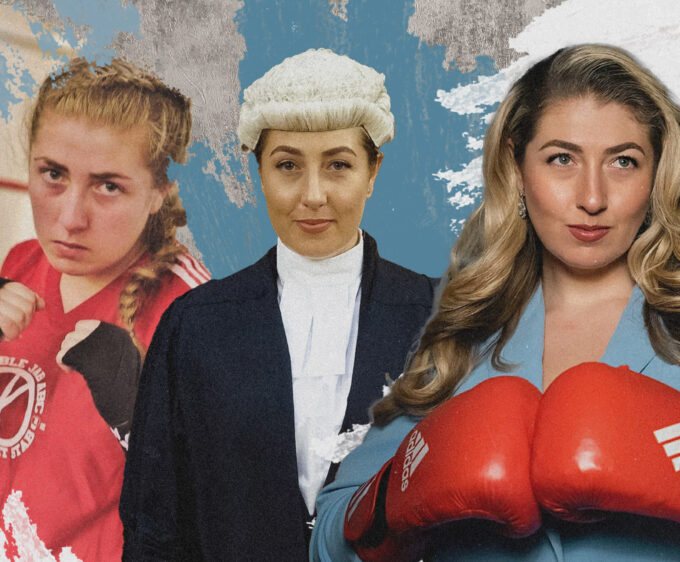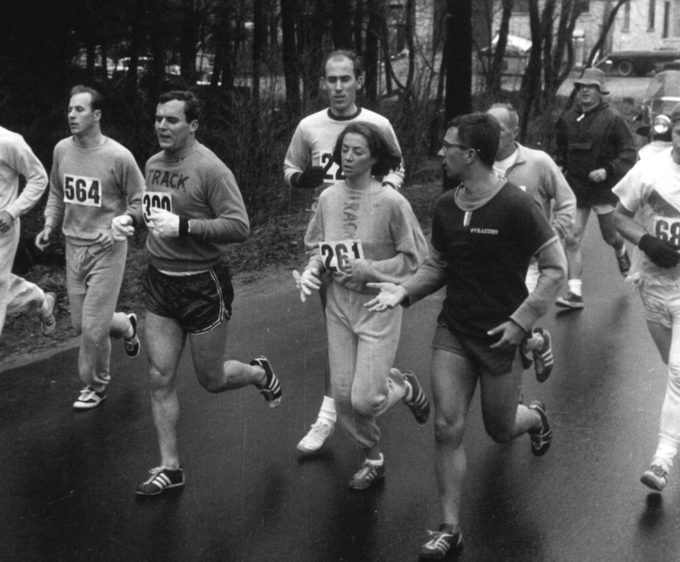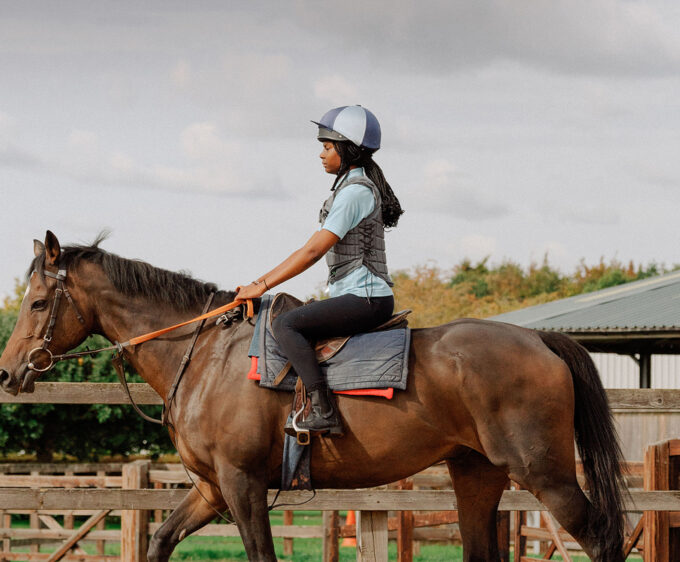
Business: Motorsport
Is Susie Wolff the solution to diversifying Formula 1? As Managing Director of the new F1 Academy, she aims to propel more women into the sport. We deep dive into the world of motorsport and meet drivers Tatiana Calderón and Jessica Hawkins to discuss the ever changing landscape
By Danielle de Wolfe
In the realm of British motorsport, Susie Wolff can be likened to Marmite. For her male teammates in 2010, being overtaken by a blonde driving a hot pink Mercedes was worn like a badge of shame. For those who now find themselves beside her in the boardroom in 2023, she’s considered a powerful adversary.
Climbing Formula 1’s notoriously tricky corporate ladder, Susie is a sign of just how far things have come for women in motorsport – both in terms of aesthetic clichés and archaic misogyny. After all, the paddock has long been hailed as the ultimate billionaire boys’ club. A fighting force where diversity is concerned, 40-year-old Susie was honoured with an MBE for services to women in sport as part of the 2017 New Year Honours List.
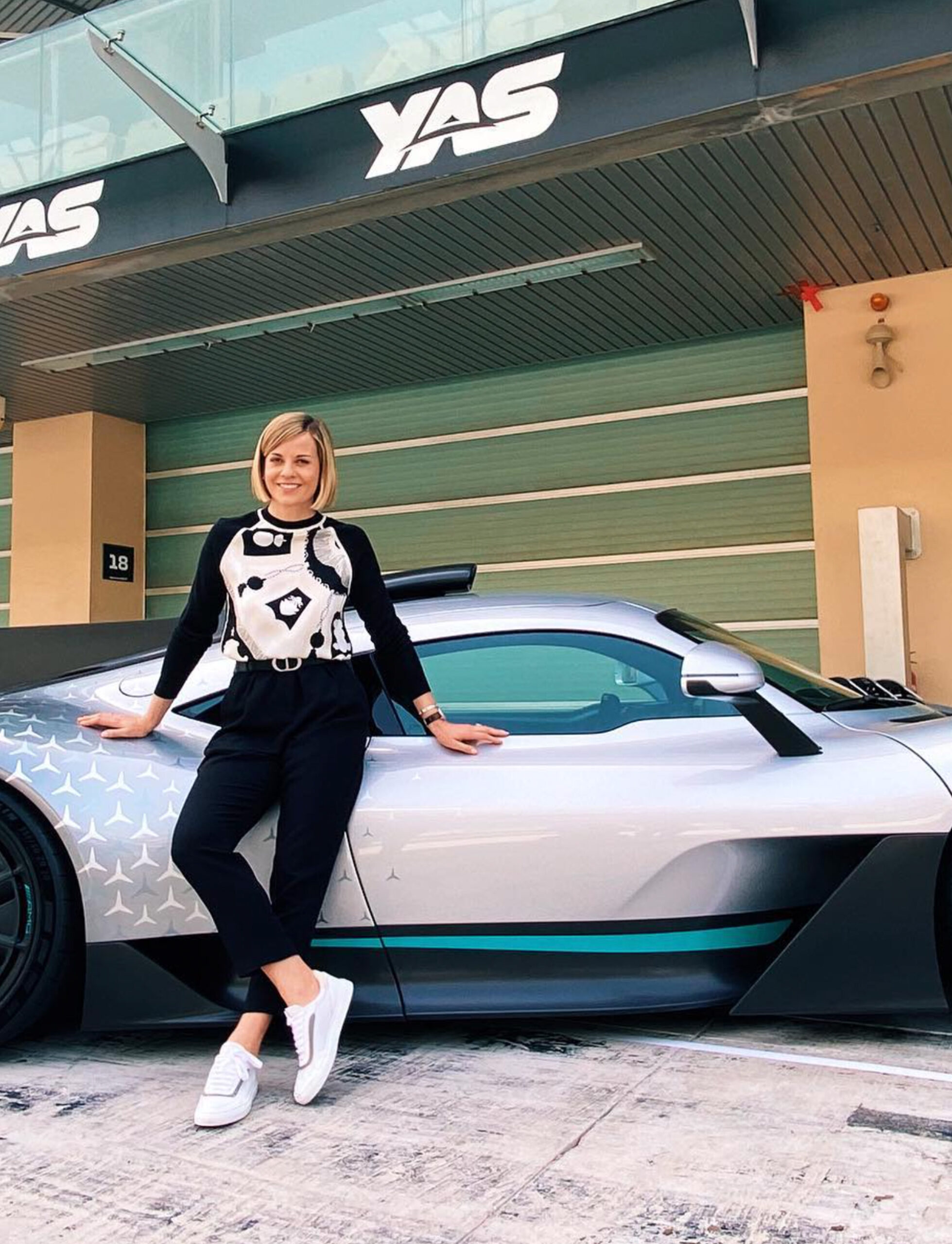
Critics have, in the past, labelled her a PR gimmick. A token female gesture against a male-dominated motorsport landscape, if you will. Her on-track skills proved otherwise. And if Susie’s track record is anything to go by, the former Formula 1 driver will relish the prospect of proving her critics wrong.
Power Partnership
Married to Mercedes AMG-Petronas F1 Team Principal and CEO Toto Wolff, the former driver forms half of Formula 1’s ultimate power couple. “You need to see it to believe it,” remains her philosophy where women’s progression to top-tier racing is concerned – a sentiment she reiterated in a recent television interview, adding: “you don’t get championship points for diversity”.
And it’s true, in part. Visibility is one piece of a highly complex puzzle. However, with ‘exposure’ remaining the foremost buzzword where inspiring the next generation of female F1 drivers is concerned, is it the answer to getting more women in top-tier motor racing? As any influencer will attest, ‘exposure’ doesn’t pay the bills.
Which is why the racing driver-turned-business mogul hopes 2023 will pave the way for change. The role of F1 Academy’s new Managing Director is her latest off-track title. The Academy’s mission appears simple: to propel more women aged between 16 and 25 into the upper echelons of motorsport. How? By increasing visibility, ensuring the all-womens series maximises track time for drivers, increases technical and physical skills, and provides a clearer trajectory into Formula 1.
Or at least that’s what Formula 1’s PR machine is saying.
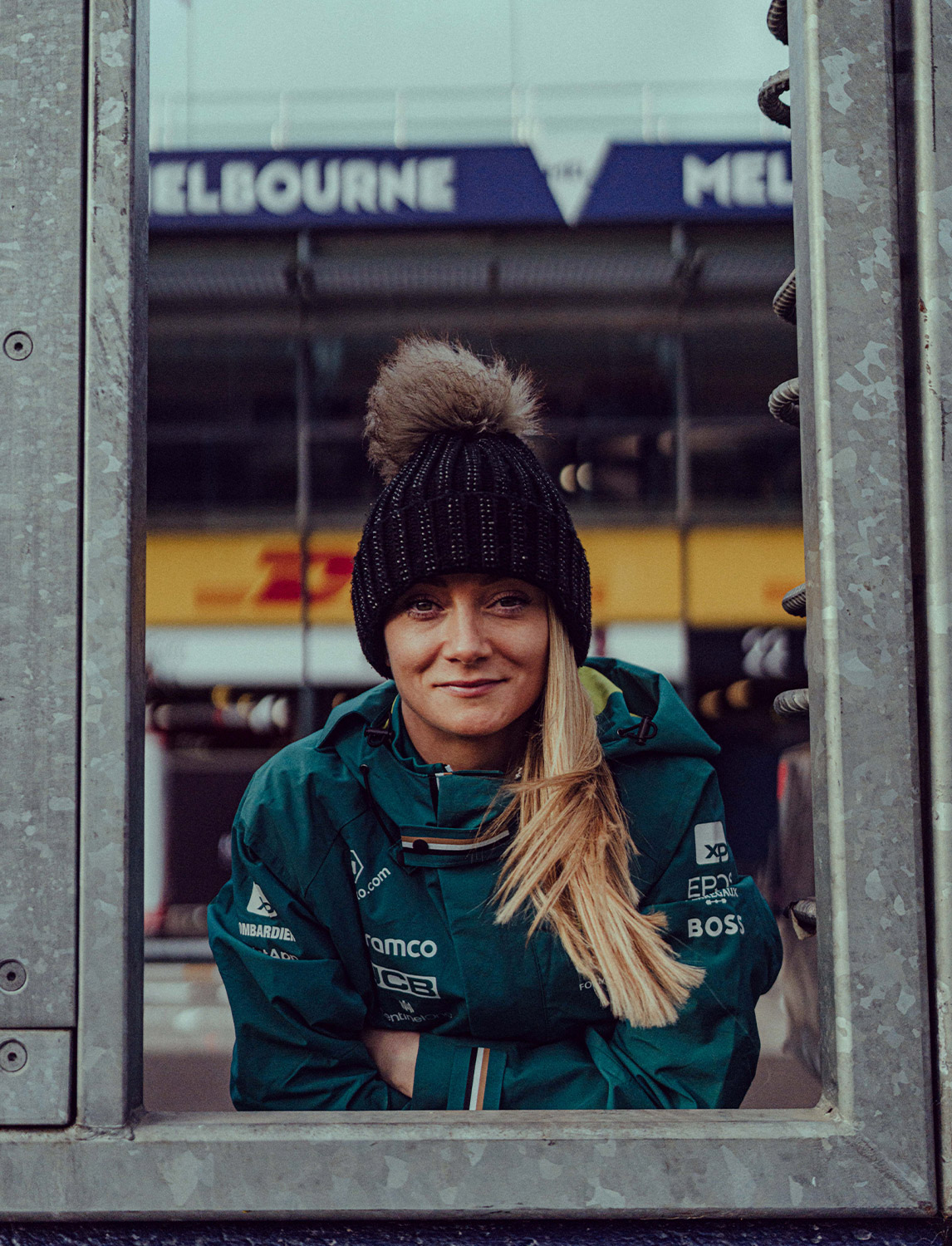
If these words ooze scepticism, it’s only because history has long dictated otherwise. Something clearly isn’t working. Susie has previously said she “fought like hell” in her attempts to change the colour of that vibrant pink DTM Mercedes. Racing became a finely tuned balancing act, embracing her USP without becoming a novelty – all whilst keeping the sponsors supporting her happy. And then, in 2014, Susie became the first woman to take part in a Formula 1 grand prix weekend in over two decades, sliding into the cockpit of a Williams at the British Grand Prix. She was also the last.
Looking Up
It’s not all doom and gloom, though. Just last month British American Racing (BAR) founder Craig Pollock announced he was looking to debut a Formula 1 team with a 50/50 gender split in 2026. A team which competed in F1 between 1999 and 2005, the new funding is thought to come from Saudi Arabia and the 50/50 split would extend to the boardroom. Whether this concept ever comes to fruition is another matter entirely.
That’s not to say other female drivers haven’t come close in the years since. In fact, F1 test driver Tatiana Calderón, Formula E’s Simona De Silvestro and British three-time W Series Champion Jamie Chadwick are prime examples.
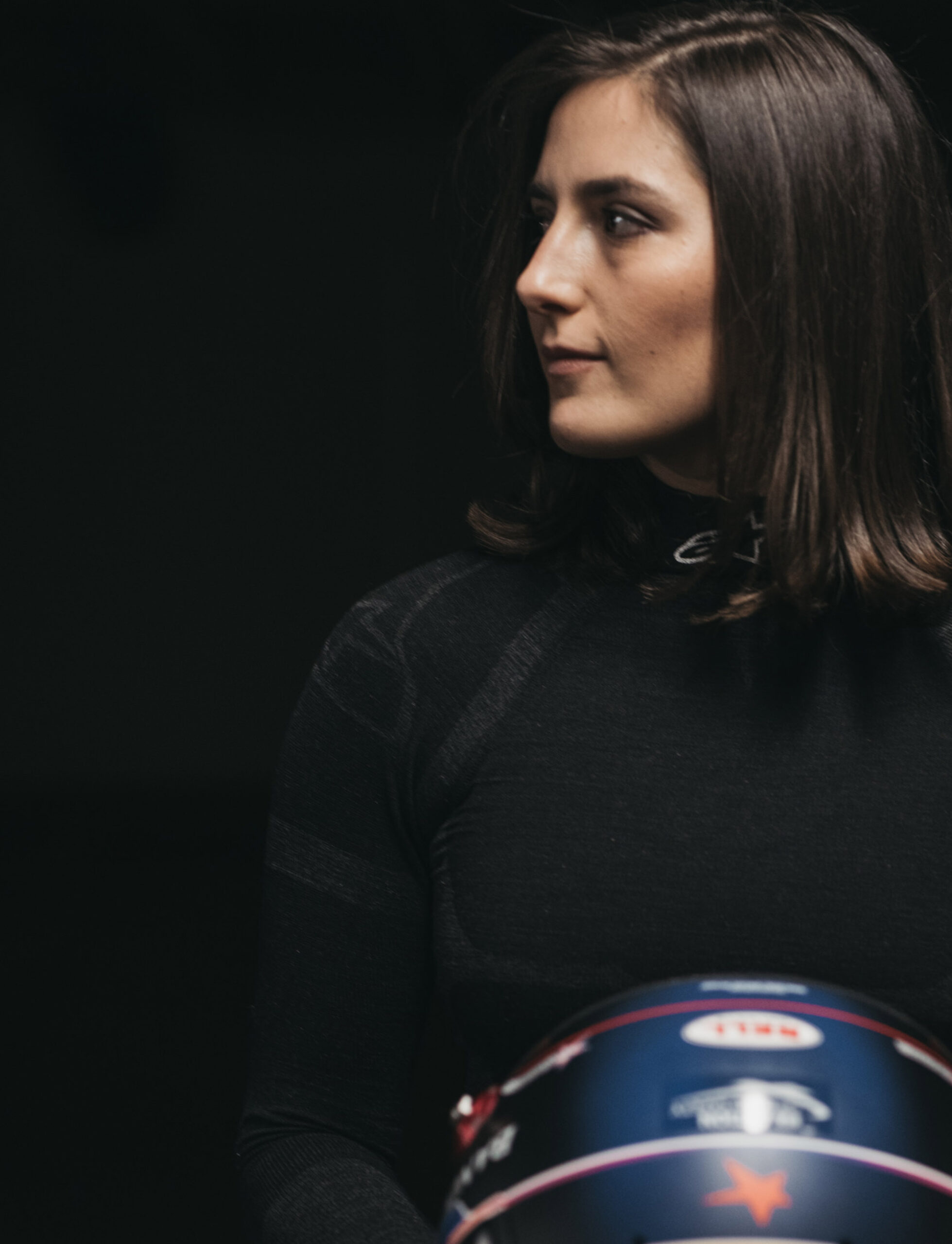
Notably for Tatiana and Simona, funding – or the lack thereof, once again put a stop to their grand plans after backers failed to pay up.
Hailing from Colombia, 30-year-old Tatiana transitioned from the karting tracks of South America to a Formula 1 seat as a test driver for Sauber (later Alfa Romeo). The first woman to ever break into FIA Formula 2 – the feeder championship for Formula 1 – Tatiana modestly insists the success of fellow driver (and Columbian) Juan Pablo Montoya acted as a launchpad for her career. “There was a boom in karting and sport in Colombia,” she admits. “And I come from the boom as well.”
When it comes to the subject of F1’s new Academy, however, it’s safe to say Tatiana remains a little sceptical. “It’s not gonna be easy,” she says, highlighting the recent abandonment of W Series – the most recent all-women’s championship. Aligning with multiple Formula 1 race weekends as a ‘support race’, W Series ran for three seasons before a lack of funding forced an indefinite hiatus in 2022. At the time, F1 came under fire for its lack of financial support during W Series’ time of need – despite happily promoting its diversity on social media. After all, the funds required for a bail-out were small change for the giant organisation. However, the launch of F1 Academy appears to suggest those funds had already been allocated elsewhere.
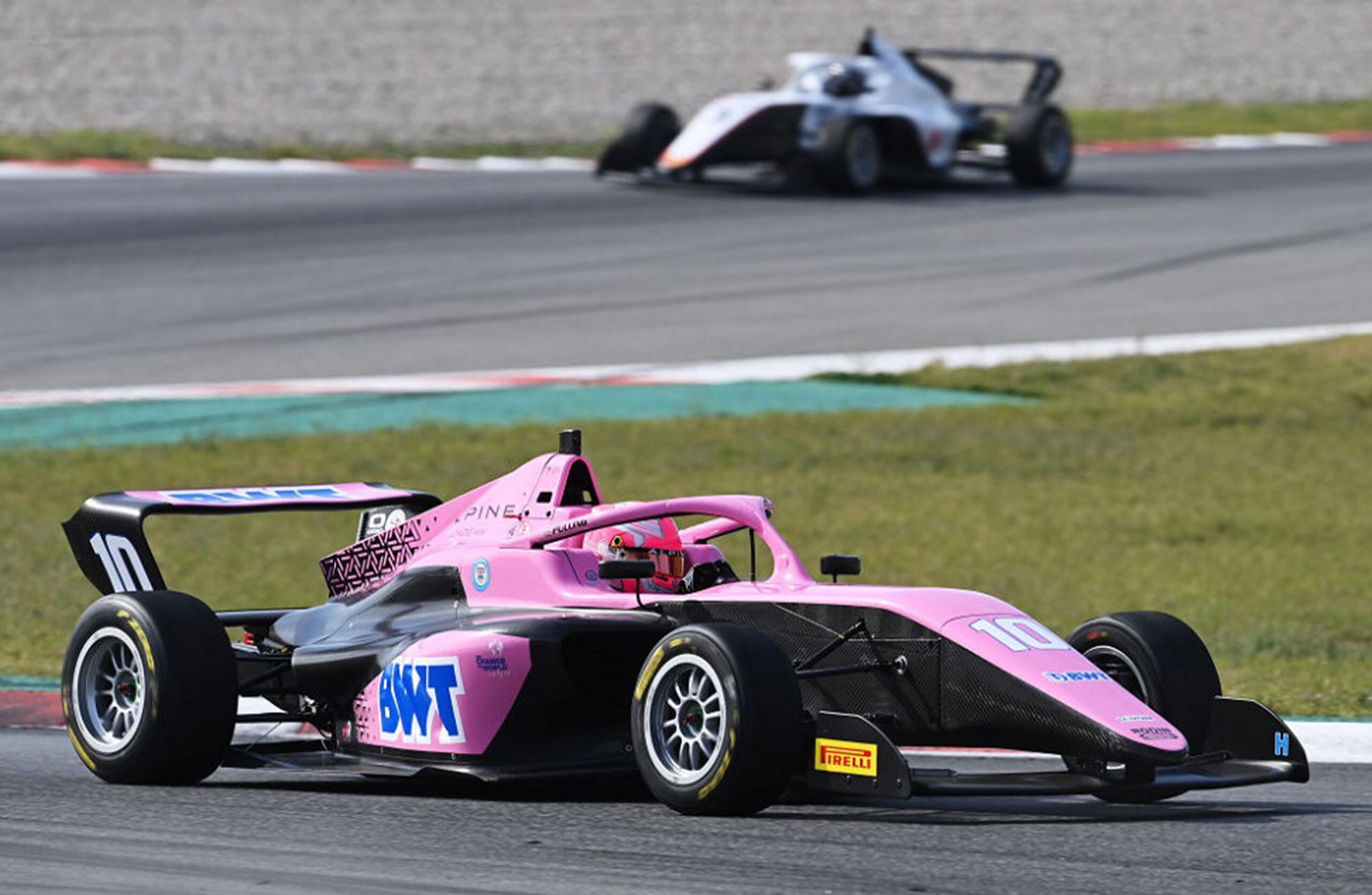
ABILITY
Tatiana’s biggest concern with F1 Academy, it seems, lies with the concept of gender segregation. “It showed that maybe that route was a bit of a mistake,” she says, highlighting the funding issues experienced by W Series. “Right now, they’re doing the same, but different… I’m curious to see how that’s gonna turn out.”
“In my opinion, the biggest issue – and why I don’t think segregating is the answer, is because if you’re not exposed to competing against people that are different to you, how do you know what you need to work on? What you need to change, right? So this is why I feel there’s so much we need to still learn and research. To be given the opportunity to do that – to change the narrative and have more women joining the sport.”
Money Matters
Aston Martin F1 driver ambassador Jessica Hawkins experienced the anguish of W Series first hand. Recounting her final races as part of the ill-fated series, Jessica describes the curtailment of the project as “heartbreaking”. Like many drivers, the 28-year-old has a fingers-in-multiple-pies approach to motor racing, doubling as a stunt driver for films including No Time To Die. Something of a motorsport Swiss army knife, the driver is also candid in her reflections of the industry.
“I wish that I’d known how expensive it was, how much heartache was involved. I wish I’d known how much blood sweat and tears was gonna go into it. But I still probably would have done it,” she says.
“Unfortunately, [W Series] did struggle for funding – and that’s no secret,” Jessica admits. “Nobody wanted that. Everybody worked so hard to make sure that it didn’t happen… But they were very transparent with us, nothing was a secret. And we were made aware during Singapore that things weren’t looking good, but they tried absolutely everything they could.”
W Series’ Singapore race took place on September 30, 2022. It remains the last competition to date, with the final three races – all of which aligned with the Formula 1 calendar – cancelled. “Obviously, it was heartbreaking. But the opportunity to even have three seasons worth of racing was incredible. I genuinely wouldn’t have been racing if it wasn’t for them, especially in a Formula 3 car or a Formula Regional car on a Formula 1 package show. I’ve got so much to thank them for. They’re still working very hard to make it happen again, so fingers crossed for some news soon.”

W Series’ revolutionary setup offered a fully paid seat to drivers with potential. Much like the proposed F1 Academy, the identical nature of the cars allowed the driving, not the money, to do the talking. Highlighting the funding issues following the curtailment, W Series CEO Catherine Bond Muir acknowledged sponsorship was a huge problem for all genders in motorsport. “With the men’s side of the sport it’s incredibly tough,” she was quoted as saying, “but I do think that for the women, it’s even tougher.”
As you might have guessed, finance often proves the final frontier when it comes to securing a race seat. It’s here F1 Academy hopes to come into its own with the help of Formula 1 as its backer. Effectively subsidising entry to the all-women’s series, Formula One will sink US$150,000 (£120,000) into each car – a sum the individual must then match. It’s a concept that felt somewhat frenzied ahead of its first season, as drivers battled to secure funding in order to confirm one of only 15 seats available across 5 teams. Proving a challenge for even the most experienced names on the grid, a few clicks lead you to former W Series driver Marta García’s GoFundMe page. Having raised €3,600 to-date, it has since been confirmed Marta will drive for Prema Racing in the series, suggesting hefty financial backing had been found behind the scenes.
Tatiana is quick to highlight the issue with such a funding model, given F1 Academy looks to position itself as something of a feeder platform for Formula 3. “You have to pay to drive [in F1 Academy] and you don’t get paid,” she says matter-of-factly, highlighting the cars are less powerful and more expensive than those seen in W Series. “So I struggle massively to understand it. Unfortunately, that’s the way they want to keep trying… but then you have to find over a million [euros] to race in Formula 3. So who’s gonna give you that money? That’s my concern. But I hope that they can bring something to the girls that are joining the series, because in the end, you just want more female talent and more support for the next generations.”
Susie’s new challenge appears to be playing a numbers game, hoping that more track time – a planned 200 minutes per round compared to W Series’ 90 minutes – over a prolonged period will result in greater visibility and sponsorship opportunities. Despite only the final F1 Academy race aligning with a Grand Prix race weekend (Texas) in 2023, F1 CEO Stefano Domenicali has since confirmed the number of races that coincide will increase for 2024, in order to maximise the free publicity provided by Formula 1.
POTENTIAL
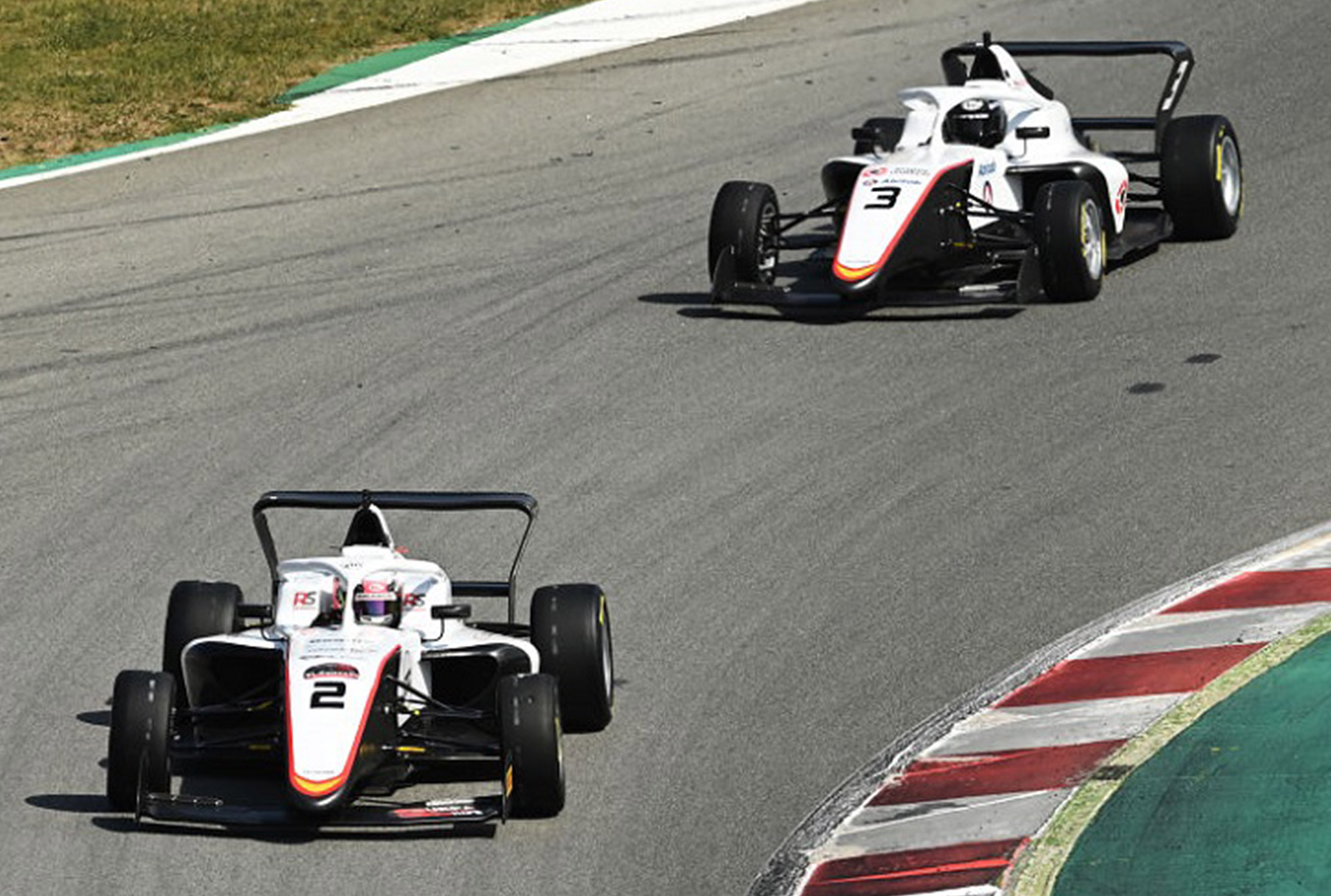
Rewinding the clock to Susie’s days driving that hot pink Mercedes, the charity Women in Sport computes that women’s sport sponsorship accounted for only 0.4% of total sports sponsorship in the UK (between 2011 and 2013). Fast forward to 2022 and a study by SponsorUnited showed that women’s sport sponsorships had increased globally by 20 per cent year-on-year in 2022. Those figures have undoubtedly been bolstered by the success of women’s sport against the odds. Teams such as England’s Lionesses and the Red Roses excelled on the international stage. When it came to women’s football, 80% of ticket purchasers at general sale were previously unknown to UEFA or the FA, showing audiences are increasing across the board.
The Netflix Effect
But with Formula 1 deemed a mixed gender sport – despite the presence of no women on the grid, no such comparisons can be made. Sky Sports, who own exclusive rights to F1 coverage, note their average viewership has increased by 60% since 2019, with 4.3m new viewers to Sky Sports F1. With its villains and heroes, Netflix series Drive to Survive has done its part for increasing Formula 1’s global audience – and income – during the streaming era. However, with no major female characters of note, how are women meant to capitalise off what Susie calls “the Netflix effect”?
“It seems like a very macho world, where it’s about balls and money and they [men] dictate everything,” laughs Tatiana about the show. “That part I don’t really particularly share. It is not welcoming, let’s say – which tells you that there is still a problem.”
What she does point to, however, is a factor that has the potential to surpass any other stumbling block for women in terms of its prominence. A point that highlights the lack of analysis and data when it comes to women’s bodies in an F1 car. Not only that, but the fact that Formula 1, on a fundamental level, has always been a sport designed by men, for men.
“Our bodies are different,” says Tatiana. “So we have to train differently. We have to sit in a different position. We have a lot of different measurements with the ergonomy of the cars. And there’s so much more research that needs to be done, because everything has been built for men.”
“What works for men may not work for us,” she adds, “but that doesn’t mean that our potential is [different]. If you have to think you go slower, right? So why don’t we build something that is natural for us?”
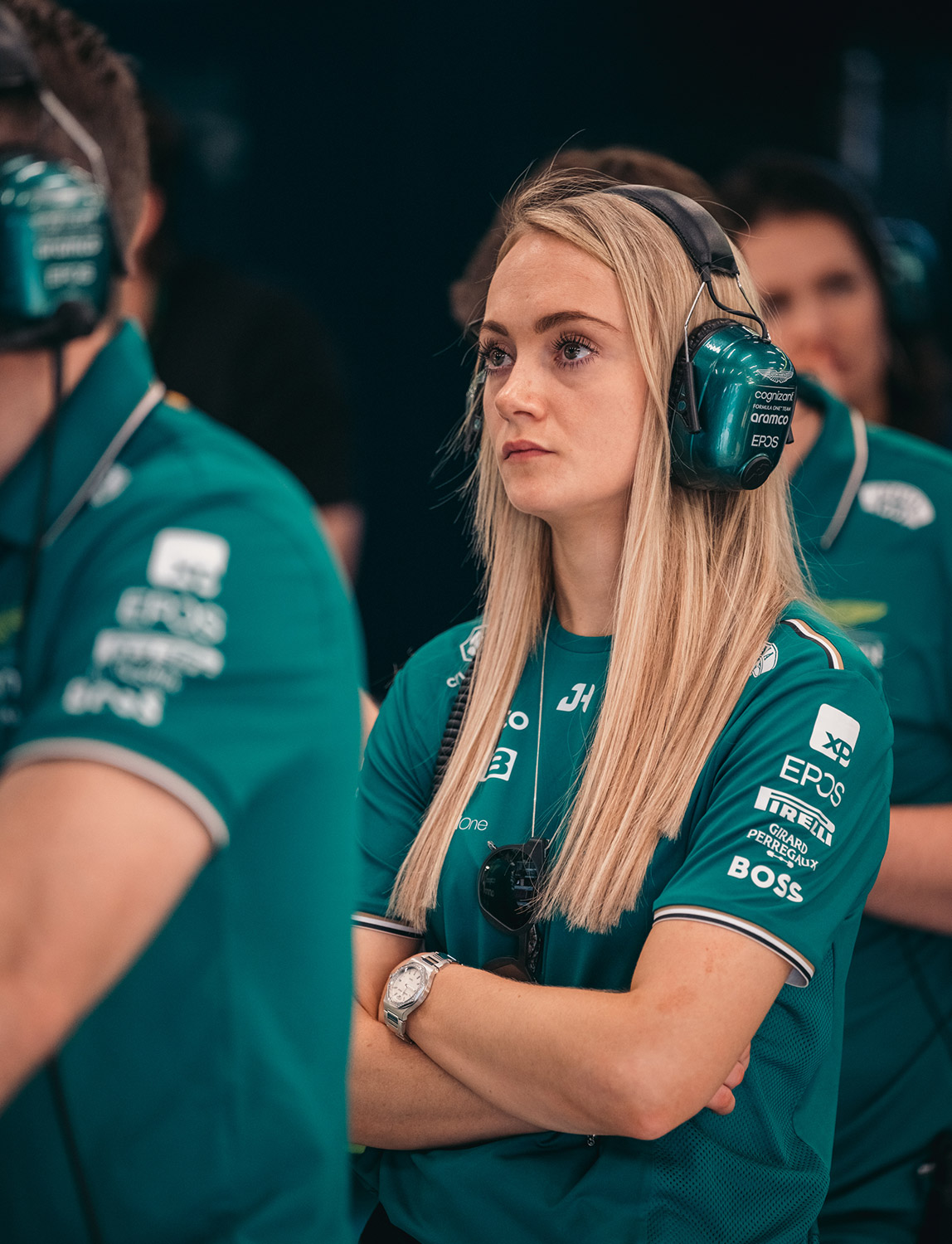
Noting the very real possibility of doing the same job but “in a different way”, Tatiana highlights the beauty of having so many different setup options available in an F1 car. A vehicle that’s fundamentally a moving computer, she notes that “three different manufacturers can be one tenth [of a second] off each other, but doing the time in different areas.” Illustrating that small differences can completely change the results of any one drive, she surmises that in the end, “what matters is the total time”.
“So that’s why I feel like it’s taking us a bit longer; first to earn the respect of people that we work with, then to change what they’ve been doing for years,” says Tatiana. “Because we are different, we feel differently, we think differently and our bodies are different.
“I’m sure we can achieve the same, but we must help people understand our needs. And that’s the thing that we’re missing – data and analysis. We have a period and we have more endurance than sprints. Maybe we need to do strength work more often than men. And people don’t have the knowledge yet, in my opinion, of what women need.”
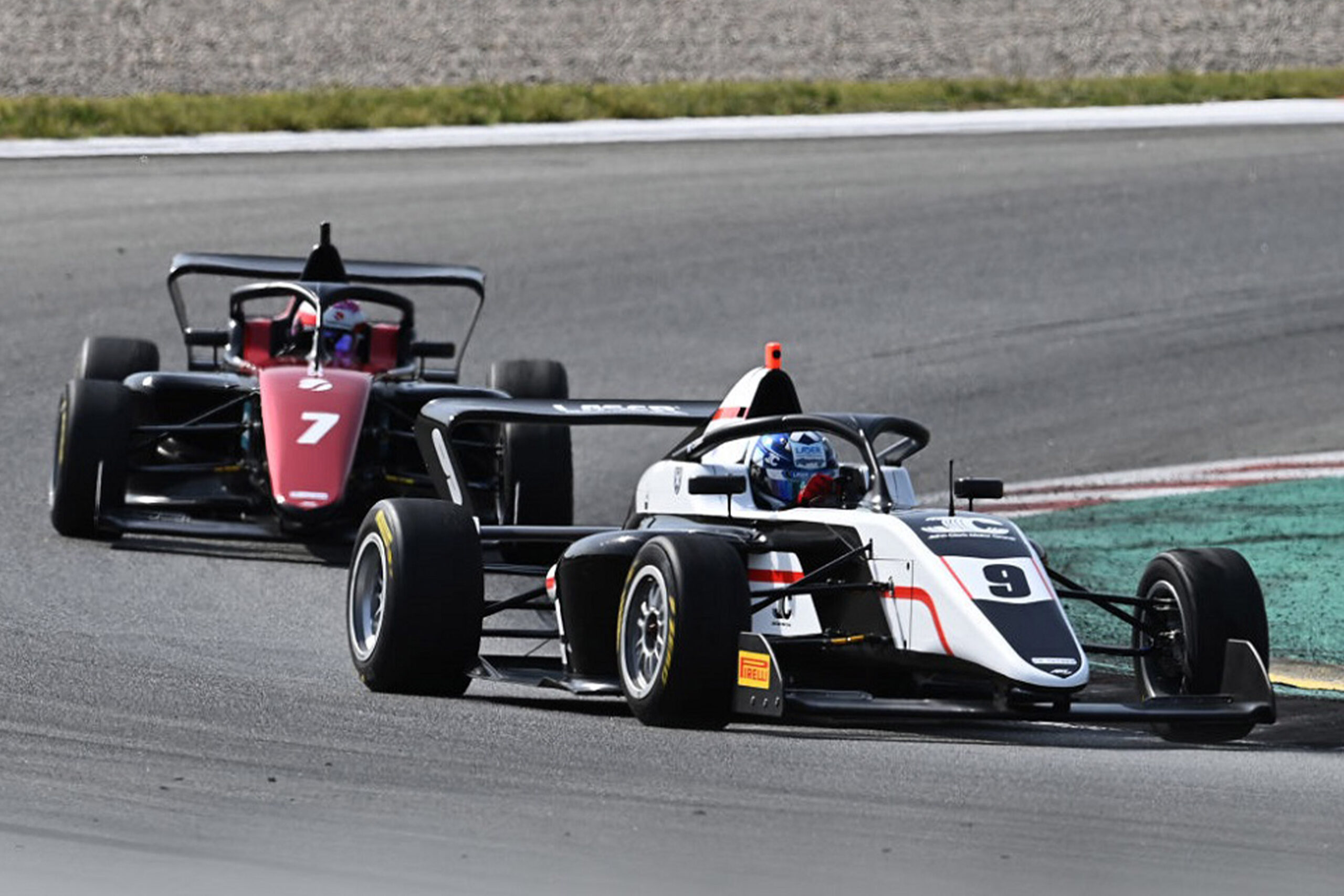
Editorial Design by this is root
